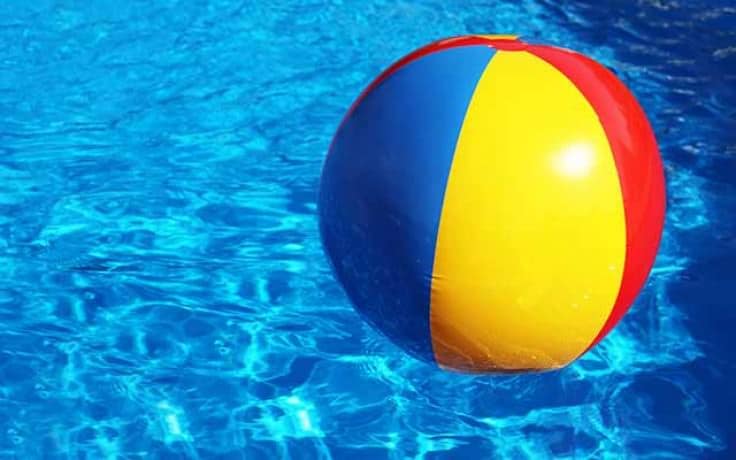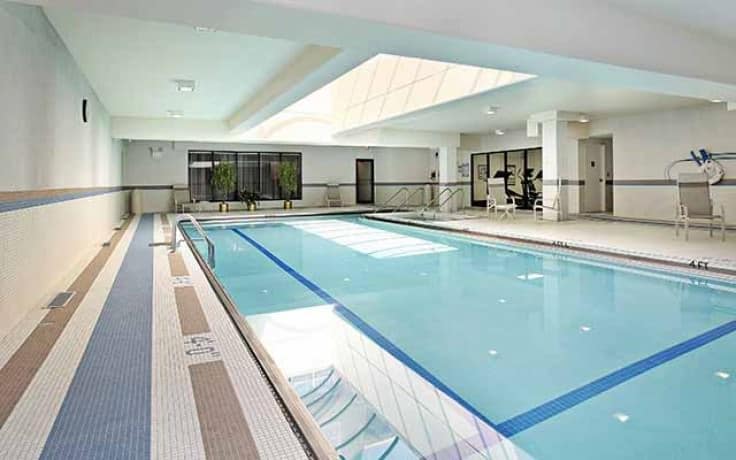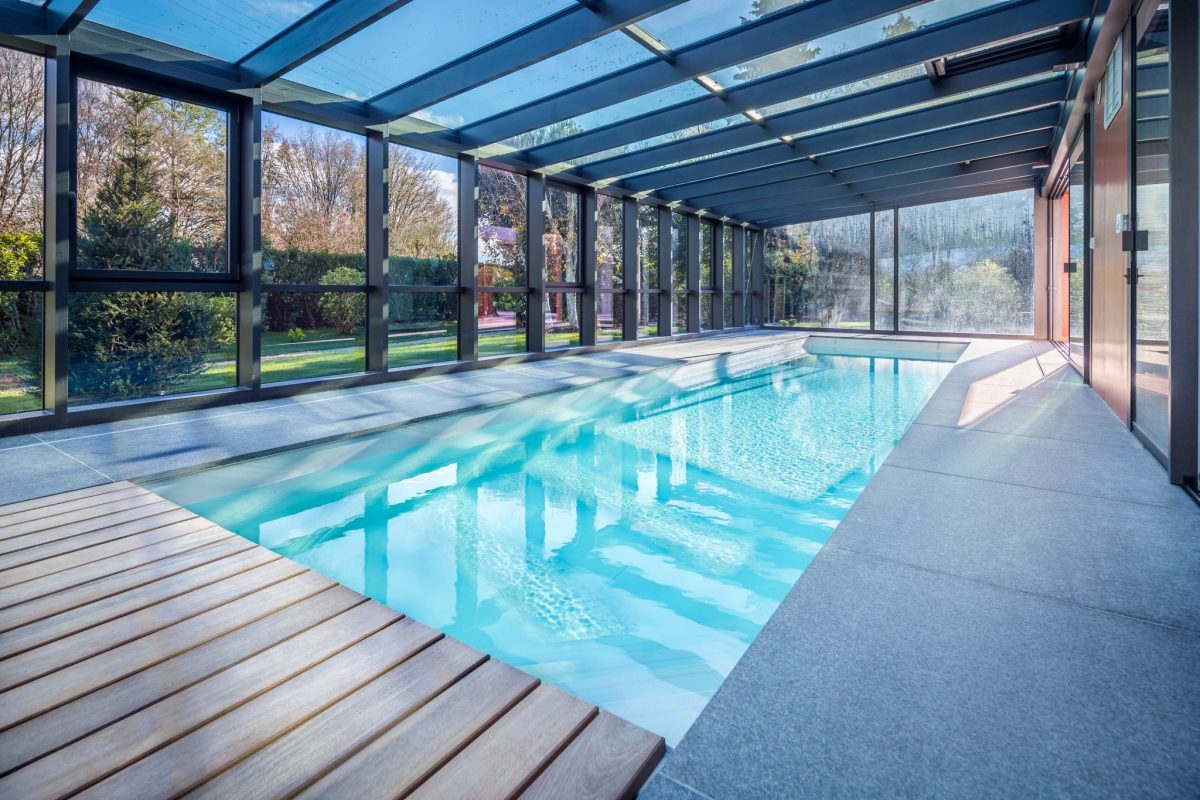Over time, the look of your swimming pool may need freshening up to bring it back to its former glory. Painting your swimming pool is a simple DIY task that, with a little preparation and patience, can be a lot cheaper than having it re-rendered.
Choosing the correct paint plays a huge role in the finished results. By following a few guidelines, you will see quality results that will last for many years.
Selecting the Right Swimming Pool Paint
 There are several different types of recommended paints for swimming pools and an array of colours to choose from, but most people select a variation of blue, such as BS4800 18.E.51 (St. Tropez Blue).
There are several different types of recommended paints for swimming pools and an array of colours to choose from, but most people select a variation of blue, such as BS4800 18.E.51 (St. Tropez Blue).
If your pool has already been painted, you will need to use the same type of paint as the existing paint to avoid any problems with incompatibility. You must never overcoat a water-based pool paint with a paint that has a stronger solvent, such as chlorinated rubber paint.
If in doubt, please call the Technical Department at Promain on 01462 421333.
Epoxy Paint
Epoxy paint is a very durable coating that will typically last 7 to 10 years and will resist chemicals, stains and abrasion. The disadvantage of epoxy paint is that it does not very resistant to UV rays and will fade over time. We would recommend the application of a PU over the top to improve its UV resistance.
Chlorinated Rubber-based Paint
Chlorinated rubber paint is less expensive than epoxy paint and easy to apply. It is a very fast drying product and has a lifespan of 3 to 5 years, offering good coverage.

Chlorinated rubber paint is not as durable as epoxy paint and we would always recommend that it is not applied in direct sunlight on hot and humid days. Chlorinated rubber paint reacts against any moisture in the surface of the pool so after draining the pool you must leave it for at least 3 to 5 days to dry thoroughly before applying the paint.
Acrylic Paint
Another option is a water-based acrylic pool paint. This type of paint is ideal for a variety of swimming pool surfaces and typically lasts 2 to 3 years. Acrylic Paint is recommended if you regularly repaint your pool. This paint is also easy to apply and can be cleaned up using water.
Tips for Painting Your Swimming Pool
Once you have selected the correct paint for your swimming pool, preparation of the pool surface is critical to the success of repainting and achieving a long lasting, quality finish. If thorough preparation is not carried out you will have problems with the paint not sticking to the surface of your swimming pool and this can create chipping, bubbles or chalking – all of which will produce poor results. The more thoroughly you clean and degrease to remove any barrier between the substrate and the new paint coating, the less likely you are to have problems with paint adhesion.
The amount of preparation depends on the condition of the pool. For pools in extreme disrepair, it might be necessary to sandblast the interior. Once done you can carry out any repairs to any cracks.
Cleaning Your Pool
Firstly, you will need to drain your pool completely and clean its surface so that there is no dirt, debris, oils, loose or peeling paint, or chalk, taking care to ensure any residual traces of suntan lotion, dead skin and body fats are removed. If the surface is not thoroughly cleaned and degreased, the paint will not bond to the surface. Using a pressure washer is highly recommended.

Cracks and holes should be cut back to a square edge and repaired with a 2-pack epoxy mortar such as Verti-Patch or EpoxyShield Fine Crack Filler, both manufactured by Rustoleum.
Washing Your Pool
The entire surface of your swimming pool will need to be washed. Coo Var Q227, an eco-friendly oil remover is ideal for this purpose and in some cases the use of an Acid Etch is recommended. Ensure all the walls and floor of your pool are washed and when complete, rinse the surface thoroughly with water.
A second cleaning of the swimming pools’ surface will then need to be completed to neutralize the acid previously applied. This will remove any residual oil or grease.
Your pool will need to dry for the next 3 to 5 days, particularly if you are using chlorinated rubber paint. Make sure the swimming pool is completely dry before applying paint and rain is not forecast for the next 7 days. The erection of a tent over the pool is recommended to stop the pool surface from getting wet.
Applying the Paint
After your pool has been cleaned, washed and is thoroughly dry, you can begin applying the paint.
Pay attention to the weather conditions and the recommendations of the paint manufacturer. The ideal conditions for painting a swimming pool are cloudy, relatively warm (around 20 degrees centigrade) and minimal wind. The humidity level needs to be below 50%. Painting in cold conditions or during hot, humid conditions will adversely affect the paint finish and its durability.
A paint roller with an extension handle will make the job easier and will give a good result. A paint brush will also be necessary to cut around lights, drains, valves and corners. Work your way around the pool with the roller; start at the deep end of your pool. Work your way towards the shallow end.
A second coat of paint is always recommended. You will need to wait a minimum of 4 to 6 hours before applying a second coat.
Following Paint Application
When you have finished painting, you will then need to leave it to dry for 7 to 10 days before you begin filling it with water again. It is very important that you give a proper amount of time for the paint to dry and fully cure. Filling the pool too soon will cause the paint to bubble and eventually fail.
After the paint has fully dried and cured you can fill your pool. You can then add the correct chemicals once you fill the pool with water.
Choosing the correct paint and procedure to prepare and paint your swimming pool will give it new life.
If you have any questions, please call the Technical Department at Promain on 01462 421333.




